Mortal Danger Read online
Page 2
But there is one small house that stands empty. Its lot, like all the others, is very small—perhaps eight feet away from the neighbors’ windows. It’s a sweet house, once the beloved home of an elderly woman. Now it almost seems to vibrate, sending out a chill feeling of terror, oppression, and perhaps insanity.
It was very difficult for me to park in its driveway for even ten minutes. Everything in me seemed to scream: “Leave! Get away from here…now!”
I didn’t listen. I had a story to tell.
Sometimes the month of May felt to her like a replay of one long bad dream, bringing back memories too frightening to explore, too intrusive to ignore. Every spring, the dark-haired woman felt a flash of another recollection, playing across her mind like a video clip. Try as she might, she could never erase it before it finished playing.
May 1999
The sun had become a narrow sliver on the western horizon, and then it was gone, swallowed up by the Pacific Ocean, and leaving the woods dark as pitch as she ran for her life. She couldn’t see where she was going, but that meant he couldn’t see her either. For that she was grateful. He had promised her that this was the night she was going to die, and she didn’t doubt his intention. Her only chance to survive was to reach her neighbors’ house before he caught up with her.
She was barefoot and naked, but that didn’t matter. She barely felt the thorns and little stones on the forest floor, the sharp gravel of the long driveway, the scratches etched in her skin by the fir and pine boughs and the blackberries that sprang suddenly out of the dark all around her. She marveled that she had never run so fast in her life, almost levitating as she plunged through the trees and boulders. Adrenaline surged through her body despite the aching in her lungs; she was a constant hiker on the beach far below, but she hadn’t run for years.
Now she ran. She thought she heard him behind her.
It seemed impossible that this was the man she had admired, longed for, and been ecstatically happy with, back when the time they could be together had finally arrived. They had been through so much, and for a while it had looked like all their hopes and plans for the future were actually going to come true. She’d followed his lead without a single doubt, because he was strong, capable, and charismatic. And kind.
Once, she could not even imagine leaving him, but now she wanted only to be free, and to keep from dying at his hands.
It was May 29, 1999, the Saturday of Memorial Day weekend, when it all fell apart.
Most people who lived on the Oregon coast or who had traveled there for the holiday weekend were having picnics and camping out. It was the first three-day weekend of the year when they could reasonably expect the weather to be warm and sunny, and the whole coastline from Astoria to Brookings was wondrous as summer rapidly headed in. In the winter, Oregon beach towns were subdued, cloaked in misty rain and fog, and year-round residents enjoyed the peace that descended when the tourists left. Gold Beach was no different.
The couple whose lives collided in a scene of horror had believed that Gold Beach would be their Shangri-la. On one of their many driving trips around the country, both of them had been taken with the little town. It seemed almost a Brigadoon of tranquility and natural beauty. Located about twenty miles from the California border on twisting Highway 101, Gold Beach had once been strictly a logging town with rugged roots, but its incredible views of the Pacific Ocean and the sea stacks—rock towers rising high above the surf—drew tourists, too.
Californians flocked to Gold Beach, beachcombing from Cape Sebastian to Cape Ferrelo, enjoying the virtual wilderness just beyond town and the endless surging waves of the Pacific Ocean. Their increasing presence providentially offered a new industry to Gold Beach as the logging faded. Small businesses sprang up, catering to visitors with art, theater, and wine festivals.
Steelhead and trout fishing had long been popular with true aficionados on the roaring Rogue River that coursed to the sea near Gold Beach, but jet boats soon offered sightseeing trips up the Rogue. Hollywood came to the Rogue River to make movies, and a number of famous stars built sylvan retreats there.
Publicity penned glowingly by entrepreneurs pointed out that tiny Gold Beach had more hours of sun on any given day than any other town located on the Oregon and Washington coastlines. Old-timers hated to see the metamorphosis of Gold Beach from a place where everyone cared about one another to a tourist magnet, but they acknowledged that people had to have a way to make a living.
On their first trip, one couple from California drove around Gold Beach, dined at a restaurant owned by locals, and fell in love with the small town. One of their goals was to come back someday, not as tourists but to live there.
And they did.
But by the time they returned to Gold Beach, their relationship was riddled with arguments, disappointments, and quite probably even lies. Moving there was supposed to be another chance for them. Perhaps neither could foresee what might happen if they failed.
Perhaps one of them did.
She sometimes thought back to where they’d begun, when their meeting had seemed so serendipitous. The circuitous route that most people take to meet that one person romantically dubbed the love of their lives makes one marvel that anyone ever finds that person. Sometimes those fated to meet—for one reason or another—cross each other’s paths a few times before the timing is right.
Or wrong, in some cases.
Lifelong love or friendship—or endless unhappiness—may result. All perceptions of love and romance seem great at the start.
Kathy Ann Jewell was born in Mount Vernon, Ohio—in Knox County—as the second half of the twentieth century began. Mount Vernon is about halfway between Mansfield and Columbus. As a teenager, I spent one summer in Mansfield visiting my aunt and uncle. All I recall of note was the surprise elopement of Humphrey Bogart and Lauren Bacall, a huge social event for Mansfield. Bogart had extricated himself from his third marriage so he could marry the much younger Bacall. She was twenty and he was forty-five, and their affair was the talk of Hollywood when they were married at author Louis Bromfield’s farm estate.
Kathy Ann—who soon was called just Kate—wouldn’t remember that, of course; she was only a baby at the time. Her father, Harold Jewell, worked in her uncle’s appliance store, as both a salesman and a repair specialist. The first television sets were hitting the market, and the American public was enthralled with the new medium for communication. In the fifties, the sets were black-and-white only, and there weren’t many programming choices. Ed Sullivan’s Toast of the Town variety show and Milton Berle’s Tuesday-night Texaco Star Theater drew huge audiences. Some television viewers were so entranced that they found even the test patterns intriguing.
Later, Kate’s father worked in the accounting department of the Cooper-Bessemer Company, Mount Vernon’s main industry, a company that had manufactured gold-standard compression engines for 175 years.
Kate’s mother, Hannelore Erlanger Jewell, was—like most mothers then—a housewife. The Second World War was over and the Korean War seemed so far away. The mood all over America was optimistic, and Mount Vernon’s twelve thousand citizens were no different. It was an idyllic town, a good town to grow up in.
Harold Jewell was born and raised in Mount Vernon. He joined the Marines after high school and became a paratrooper, one of the first wave of Marines to hit Iwo Jima. He was also one of a handful of men in his company to survive that assault. Although he rarely spoke about the war, he once revealed that his assignment was to be the last man off the LST (Landing Ship, Tank), an amphibious vessel designed in World War II to land battle-ready tanks. His job was to gather guns and ammo that might have been left behind. Once, he found the lieutenant in command there huddled in a corner, terrified.
“I had to slap him to get him up and moving,” Jewell commented. “By the time I finished gathering up all the gear, I was separated from everyone in my company.”
A few nights later, Jewell dug himself a foxhole in t
he black sand and pulled a piece of tin roofing over him, only to be wakened and ordered to the shoreline to fight off an expected Japanese attack. That never happened, but when he got back to his foxhole, he found it obliterated by an air strike. He thanked his lucky stars he’d survived Iwo Jima.
Hannelore, Kate’s mother, was born in Germany to a Jewish father, Lothar, and a Christian mother, Minna, although they were not allowed to marry at the time. Lothar’s father forbade his son to marry a non-Jew, so Hannelore and her sister, Margo, were sent to live with a nurse from the local hospital. It was only when her parents had a male child that her grandfather permitted Lothar and Minna to marry and Hannelore and Margo went to live with their birth parents.
Her foster mother, the nurse, had a daughter, Katja, fifteen, who adored Hannelore. It was mutual. Hannelore had a happy girlhood until 1939, when she was eleven and suddenly became a pariah—an ostracized Jew—living in fear with her family. Somehow, Lothar Erlanger managed to get his family out of Germany on the last ship before the war began, and they escaped the death camps.
Ten years later, Hannelore found Katja after the war, and she named Kate in honor of her old friend.
Kate clearly came from strong stock. She was a pretty child, who grew to be a lovely woman—tall and slim, with blue-green eyes and almost-black hair. She had a little sister, Connie, eighteen months younger than she was.
Kate became a flight attendant for American Airlines back in a time when they were still called stewardesses and their physical attractiveness seemed to be the primary job requisite. It was a career many young women aspired to, with far more applicants than jobs in what was considered a glamorous profession.
Flying satisfied Kate’s quest for new experiences and adventures not to be found in small-town Ohio. She traveled a lot, both for her job and for pleasure and public service.
Sometimes, when she was on layovers for American, she stayed in luxury hotels like the Fairmont in Dallas, with coffee on a silver tray, a fresh rose, and even a phone in the bathroom. But she also went on volunteer mercy missions, during which she would throw a sleeping bag on the dirt floor of a simple hut or tent in some far-off underprivileged country. She went to Nepal several times, volunteering for the Dr. Tom Dooley Foundation. Many of her fellow flight attendants did the same thing. By Nepalese law, they were only allowed to stay in the country for three months at a time. They could leave and come back, but they weren’t allowed to “take jobs” that belonged to citizens.
Kate learned to adapt to almost any situation and was invariably cheerful and content with her life. One of her goals since childhood had been to help people, and the Dooley Foundation gave her an opportunity to do that.
By 1973, Kate had moved to San Diego, California, to fly out of the American Airlines base there. It was a good time to live in San Diego, although the population boom and the inevitable traffic snarls were beginning to emerge. It wasn’t surprising that so many people were moving to San Diego County. The weather was perfect, and there were flowers everywhere Kate looked: bougainvillea, jasmine, poinsettias that grew roof-high, and hibiscuses in many colors. Even the freeway shoulders were carpeted with purple ice plants and manzanita bushes. There was the magnificent San Diego Zoo, as well as San Diego Bay, with the ocean just beyond.
Kate lived in various apartments, moving often, from Mission Valley to La Mesa, back to Mission Valley and, for a short time, in University City. In the late eighties, she found a condo for rent on Solana Beach. It was located on a cliff and had a magnificent, 180-degree ocean view. The rent was reasonable because she shared it with a platonic male roommate. Their schedules were so different that it was almost like living alone. Solana Beach was perfect for her, as she was a dedicated swimmer who would enjoy the sport for the rest of her life. She was in the ocean swimming or boogie boarding most of the days she wasn’t flying.
When Kate was in her twenties, she always had plenty of dates, but she wasn’t anxious to get married. As she moved into her thirties, she had a few long relationships, but there always came a time when they ended. Sometimes she was the one who wanted to move on; sometimes she realized that the men she dated were averse to any lasting commitment. But she wasn’t lonely—she loved her job, and she was still extremely attractive. She felt no pressure to get married or to plunge into a long-term affair.
Kate Jewell had many interests, and one of them was nutrition and its effect on health, perhaps because she had contracted the cytomegalovirus while she was in Nepal, and the virus had never quite gone away. But she’d always believed that what people ate changed who they were. She was a strict vegetarian who studied and worked in nutrition in the early eighties as she maintained her flight status with American Airlines.
In the fall of 1989, Kate was in her midthirties, a time when most people pause to evaluate their lives. Kate was no different. She had just ended another relationship and realized that if she ever did marry, it might be too late to have children. She wasn’t unhappy, but she wasn’t really happy, either. She found herself at a crossroads.
Kate started changing her life by literally and figuratively cleaning out her closets, throwing out both clothes and memories that were out-of-date. Then she decided to take better care of her health and feel as good as she possibly could. Always a swimmer, hiker, and exerciser, she had to admit that she was feeling run-down and somewhat weary. Where she had once been slender without effort, recently she had put on some excess pounds. She was subject to hives and had a dime-sized sore on her nose that would not heal; she was quite sure it was caused by the CMV virus and had something to do with her diet.
Kate made an appointment at the Bayview Medical Group on Clairmont Drive in Mission Bay. Dr. John Branden’s background appeared to be outstanding. He had come with enthusiastic recommendations from her friends. The Bayview Clinic was modern and well appointed. She studied the diplomas on his office wall: Dr. Branden had a PhD in biochemistry from the University of Santa Fe College of Natural Medicine. He wasn’t an MD, but he certainly seemed to have had extensive education in nutrition and alternative medical treatments.
“Hi,” he said, holding out his hand to cradle hers. “I’m Dr. John.”
On first meeting, Dr. Branden was impressive, although he seemed as young as she was—if not younger. “I thought he was about thirty-five, but he was forty-four,” she recalled. “One thing I remember about that first meeting was that he had the most gorgeous—almost glowing—skin.”
That in itself was a good advertisement for his expertise. She noted that he dressed impeccably: His jacket and slacks were obviously custom-made, as were his shirts and what had to be a $250 tie. She learned later that his expensive Ferragamo shoes and sweaters were from Nordstrom. He wasn’t a handsome man by ordinary standards, only about five foot ten, blond, and slightly balding, with eyebrows that sloped down and a nose that could be described as somewhere between patrician and knobby. Still, he had a definite presence—that of a man in charge of his practice and his life. It suited him. Kate was impressed.
“He wasn’t my physical ‘type,’ though,” Kate said. Her preference had always been for the traditional “tall, dark, and handsome man,” she admitted, and then added wryly, “who [wasn’t] able to make a commitment.”
Of course that didn’t matter with John Branden. She wasn’t in his office looking for someone to date; she just wanted to feel better. And he certainly couldn’t make a commitment: He was married. His wife worked at Bayview, too, handling the insurance and the billing with the help of an accountant who was on the payroll. His daughter Tamara scheduled appointments, greeted patients, and was the front-office manager. She was nineteen and obviously thought her father was perfect. Kate learned that his younger teenage daughter, Heather, worked at Sea World. “Both his girls were lovely,” Kate recalled. “They had that fabulous skin, too.”
Tamara was attending the Pacific College of Oriental Medicine part-time to get degrees in acupuncture and Oriental medicine. When her c
lasses interfered with her job, Dr. Branden’s wife, Sue, or his younger daughter manned the front desk. Somewhat jarringly for the wife of a nutrition expert, Sue Branden was quite overweight, and she had a rather glum personality. Or perhaps she was just having a bad day, Kate thought. She seemed very different from her husband and her daughters. They brimmed with enthusiasm and cheerfulness. Kate learned that Tamara would soon be the youngest licensed acupuncturist in California.
The Bayview Medical Group offered an eight-week program, Branden explained to Kate. There would be weekly visits with him, three blood screens, menu plans, and supplements. They would begin with blood tests—titers—and whatever normal and abnormal readings resulted would indicate what her system lacked. He told her that he would personally work out a diet that would be tailored just for her, and he promised to prescribe the proper vitamins. He assured her she would be feeling well in no time, and when he spoke, he looked directly into her eyes.
She believed him. She didn’t like the idea of needles in her arm, but she followed him across the hall to the blood-drawing room. At his direction, Kate rolled up her sleeves and lay back on the paper-covered exam table.
Watching him prepare the syringe and vials, Kate said, “I’m warning you that I have deep, rolling veins that don’t like being poked or prodded.”
He nodded calmly.
“A few years ago,” she continued, “a doctor stabbed me a dozen times, and he never drew anything but pain.”
“No problem.”
He palpated her left arm and realized that she’d been telling him the truth about rolling veins. He switched to her right arm, tightening a tourniquet above her elbow.

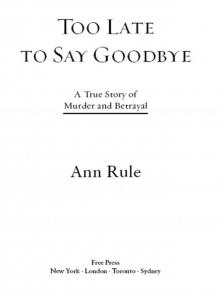 Too Late to Say Goodbye: A True Story of Murder and Betrayal
Too Late to Say Goodbye: A True Story of Murder and Betrayal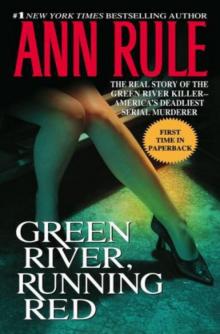 Green River, Running Red
Green River, Running Red Bitter Harvest
Bitter Harvest Dead by Sunset: Perfect Husband, Perfect Killer?
Dead by Sunset: Perfect Husband, Perfect Killer?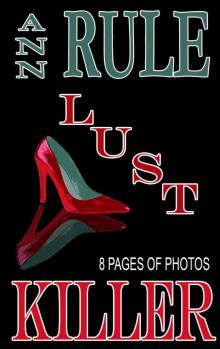 Lust Killer
Lust Killer And Never Let Her Go: Thomas Capano: The Deadly Seducer
And Never Let Her Go: Thomas Capano: The Deadly Seducer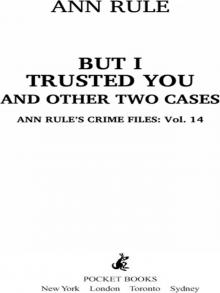 But I Trusted You and Other True Cases
But I Trusted You and Other True Cases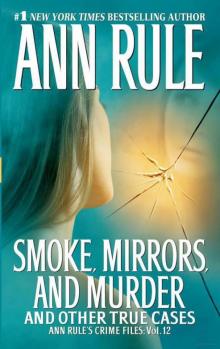 Smoke, Mirrors, and Murder and Other True Cases
Smoke, Mirrors, and Murder and Other True Cases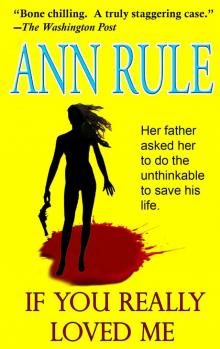 If You Really Loved Me
If You Really Loved Me Kiss Me, Kill Me and Other True Cases
Kiss Me, Kill Me and Other True Cases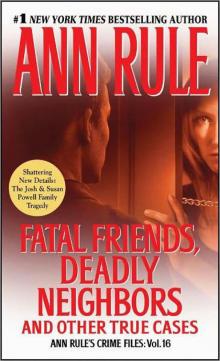 Fatal Friends, Deadly Neighbors and Other True Cases
Fatal Friends, Deadly Neighbors and Other True Cases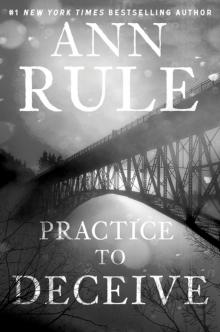 Practice to Deceive
Practice to Deceive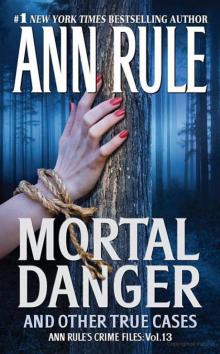 Mortal Danger and Other True Cases
Mortal Danger and Other True Cases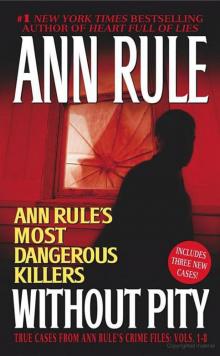 Without Pity: Ann Rule's Most Dangerous Killers
Without Pity: Ann Rule's Most Dangerous Killers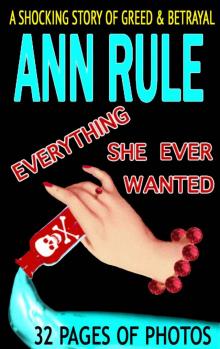 Everything She Ever Wanted
Everything She Ever Wanted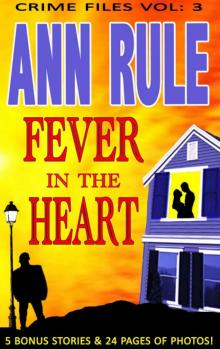 A Fever in the Heart and Other True Cases
A Fever in the Heart and Other True Cases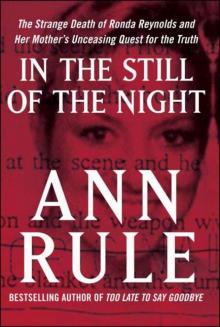 In the Still of the Night
In the Still of the Night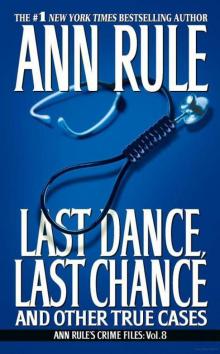 LAST DANCE, LAST CHANCE - and Other True Cases
LAST DANCE, LAST CHANCE - and Other True Cases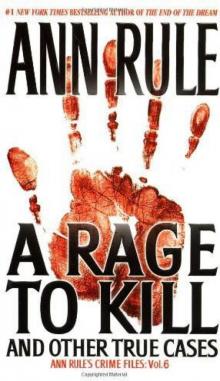 A Rage to Kill
A Rage to Kill The I-5 Killer
The I-5 Killer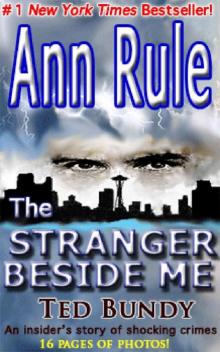 The Stranger Beside Me
The Stranger Beside Me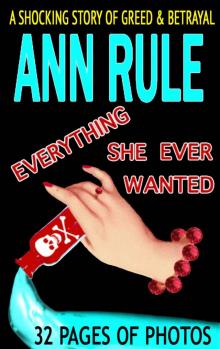 Everything She Ever Wanted: A True Story of Obsessive Love, Murder, and Betrayal
Everything She Ever Wanted: A True Story of Obsessive Love, Murder, and Betrayal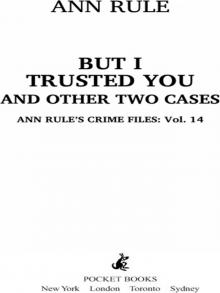 But I Trusted You
But I Trusted You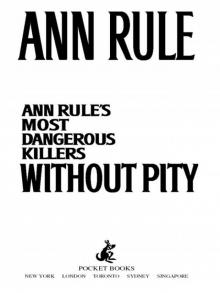 Without Pity
Without Pity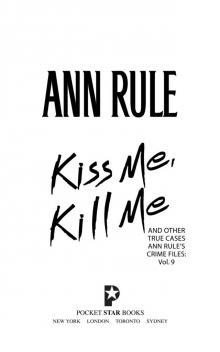 Kiss Me, Kill Me
Kiss Me, Kill Me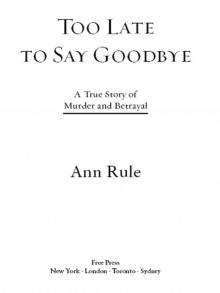 Too Late to Say Goodbye
Too Late to Say Goodbye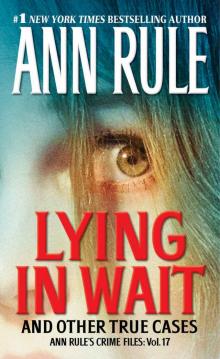 Lying in Wait
Lying in Wait Fatal Friends, Deadly Neighbors
Fatal Friends, Deadly Neighbors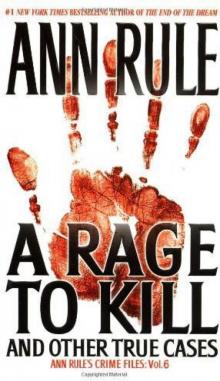 A Rage to Kill: And Other True Cases
A Rage to Kill: And Other True Cases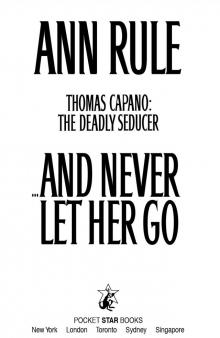 And Never Let Her Go
And Never Let Her Go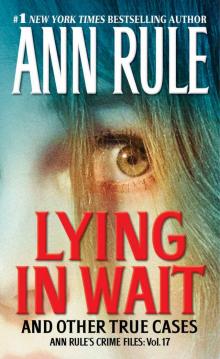 Lying in Wait Ann Rule's Crime Files Vol.17
Lying in Wait Ann Rule's Crime Files Vol.17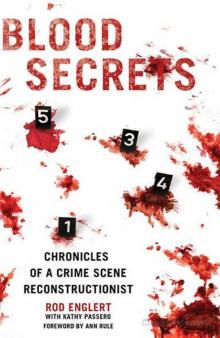 Blood Secrets: Chronicles of a Crime Scene Reconstructionist
Blood Secrets: Chronicles of a Crime Scene Reconstructionist No Regrets
No Regrets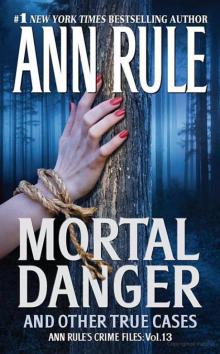 Mortal Danger
Mortal Danger But I Trusted You: Ann Rule's Crime Files #14
But I Trusted You: Ann Rule's Crime Files #14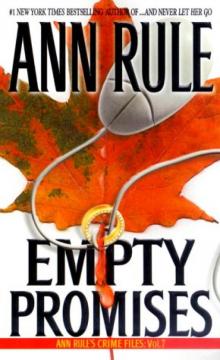 Empty Promises
Empty Promises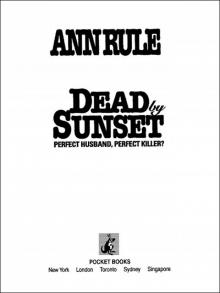 Dead by Sunset
Dead by Sunset Last Dance, Last Chance
Last Dance, Last Chance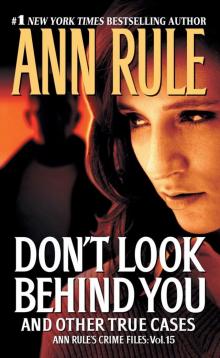 Don't Look Behind You
Don't Look Behind You